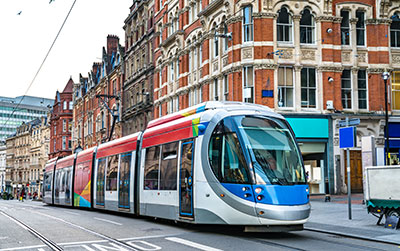Smarter places need smarter thinking

Periodic monitoring of key metrics tells us a different story. Widening inequalities, increased homelessness, higher crime rates.
When faced with the facts, these big picture commitments can seem more like flights of fancy.
The vision isn’t being realised.
Why not?
Part of the problem lies in these complex issues being perceived as distinct from each other.
Too often decision makers think in silos. Health experts work single-mindedly on improving health metrics, economic experts focus on GDP growth, while planners are in pursuit of meeting housing targets. Corporate objectives, and the success thereof, are not being considered holistically.
It’s understandable. But to achieve genuine progress across all these metrics, we’ll need to work smarter, together.
Smart cities encourage joined up thinking
We’re convinced that the way to make faster progress towards these important goals is to pool our expertise.
Smart cities are not technologically advanced cities, showcasing the gadgets of the future. Rather, they’re places where smart decision making brings collective benefits for all citizens.
Our Great Places™ methodology takes a holistic approach to placemaking, promoting the cross fertilisation of ideas throughout sectors. It identifies seven essential elements of a great place and, with outcomes measured through a quantifiable framework, produces meaningful results that inform progress.
Smart cities will focus growth around transport hubs
Building communities close to existing transit hubs—so called “transit oriented communities” (TOCs)— can help address multiple big-ticket items, directly helping to improve key health metrics, supporting social mobility by giving easier access to job opportunities, and delivering much needed housing.
These high-density, highly connected communities free residents of needing a car, open up choices and opportunities, and create healthier lifestyles, with many more benefits to boot.
Victoria North, ManchesterManchester’s largest urban regeneration project will deliver 15,000 new homes and seven neighbourhoods over the next 20 years.
Victoria North exemplifies a holistic approach to regeneration, balancing housing with environmental sustainability, social inclusion through social and community infrastructure and integrated transport planning (proposals include a new tram station and active travel routes).
Our socio-economics advice shaped the masterplan vision and informed future uses. Crucially, this helped identify and meet the community’s needs, as well as maximising benefits for both existing and future residents.
Ellenbrook, Western AustraliaEllenbrook, 25 km north-east of Perth, is one of Australia’s most successful and vibrant masterplanned communities. Originally a sand quarry, this transformational and award-winning project extends over 1,200 ha and is home to over 11,500 homes and 30,000 residents.
We led on strategic urban planning and urban design, developing the original masterplan. Ellenbrook’s development has been guided by our masterplan principles of walkability, community cohesion, and integrated planning—resulting in eight village-style neighborhoods surrounding a central town hub.
Our masterplan included the principles of TOCs from the outset, prioritising accessibility, social inclusion, and connectivity, both locally and to Perth’s CBD, culminating in the opening of the 21 km Morley–Ellenbrook rail link in 2024.
PikToc land search optimisation toolPikToc, in collaboration with Layer.studio and Ramboll, is our latest tool to embrace the TOC concept. It’s all about getting under the skin of places, analysing statistics, societal trends and GIS mapping to make smart decisions. When we combine this with local needs assessment, we acquire a deeper understanding of a place.
This approach has so much going for it. It’s hugely logical, beneficial to so many, and far easier than edge-of-town car-dependent schemes that come with new infrastructure costs and inherent planning risks.
Delivering vibrant communities
This is not about building houses; it’s delivering the right houses in the right places for the right reasons. This is how to form vibrant communities.
Ploughing on in our own silos isn’t getting us anywhere.
We must bring together experts to deliver adequate infrastructure, education and work opportunities, healthcare, and housing.
Transit-oriented communities promote a holistic approach to understanding places, guiding their future development and fostering improved outcomes for people.
We build practical solutions to some of the world’s toughest challenges. Contact Hatch today to start the conversation about how we can help you create great, successful places, through collaboration.
